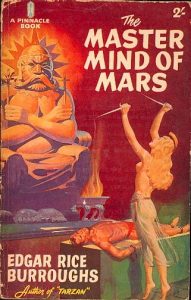
Note: This post assumes you have read biographical information from the immediately preceding post:
For all of these firsts described in the previous post, only some of which were fully articulated by Richard von Krafft-Ebing, von Sacher-Masoch was a very particular and idiosyncratic case from which to generalize and spin a psychiatric diagnosis. If von Krafft-Ebing had seen many more cases, would he have drawn up the criteria for sexual masochism any differently? Surely we would do so today, but our context is dramatically different now. At least four different modern kink behaviors were described by von Sacher-Masoch and categorized in von Krafft-Ebing’s Psychopathia Sexualis. In Sacher-Masoch’s case they co-occurred, but it is not clear they make a syndrome. These are:
 |
| A preference for fur among women is often called ‘fashion’. In a fashion magazine, this photo isn’t kinky. |
Fur Fetishism: von Sacher-Masoch had enjoyed erotic fantasies in response to statues and artistic imagery prior to a severe episode of punishment at the hands of his Aunt in early adolescence. Few non-Slavic readers recognize the name Olga as that of a local noblewoman prominent in Ukranian history for her brutal torture of her husband’s assassins. But Leopold was an ardent historian at an early age, and had shown obsessive interest in history and especially in tales of torture and cruelty prior to this episode. He told Aurora that he had had a similar experience to Severin’s punishment by an aunt. Leopold’s real aunt was prone to wearing furs, and was very aristocratic, but was dear to him, not resented and authoritarian as Severin’s was described to be.
Interestingly, later psychiatric writers had no trouble separating the fur fetishism from other aspects of von Sacher-Masoch’s presentation. Masochism does not always co-occur with fetishism, but that is pretty common. Does the fact that we can differentiate fetishism and masochism really mean they are different things, or are they all dimensions of some larger syndrome? Krafft-Ebing had died before Von Rumelin’s confessions revealed that Leopold’s aunt was not named Olga, and was adored, not reviled, and like so many aspects of the Sacher-Masoch story, the dividing line between fact and fantasy was blurred over 100 years ago and has not become clearer with time. But we cannot rule out that von Sacher-Masoch had imprinted on fur, and maybe on pain, on or before age 12 as described in John Money’s Lovemaps. That is a common story, but not a universal one. Some people learn kinks and new behaviors later in life much as they pick up a foreign language or a new sport. If kink education didn’t teach people new kinks, and better ways of doing old ones, there would be no point in arranging educational programs.
Sex Desire for Physical Pain: In this early adolescent whipping incident, and in his creative writing, von Sacher-Masoch describes transcendent, ‘suprasensualist’ feelings in response to severe pain. It is easy to imagine that thoughtful academic writers who had not experienced such transcendence, and found orgasm to be their own peak experience might have conflated von Sacher-Masoch’s descriptions with orgasm. Although we do not really know today what ‘sub space’ is, we do know a great deal more about endorphins, enkephalins and adrenaline than was understood in von Krafft-Ebing’s time. von Sacher-Masoch does not describe orgasm as an ultimate symbol of pleasure as is nearly universal in modern pornography, and in romantic erotica, and never waxes upon the superiority of beating to orgasm, but clearly seems to prefer it. He had coitus with partners before proceeding to whippings, and describes relationships where whipping happened first. In his marriage, it appears to have cemented his intention to marry, yet he continued to demand whipping even after coitus had resulted in Aurora having multiple pregnancies. So Aurora’s account of her sex life with von Sacher-Masoch disconfirms Von Krafft-Ebing’s hypothesis about paraphilias that kinks interfere with reproductive agency.. But he was died in 1902 before these details became public.
How blurred are the concepts of pain and humiliation? When I Googled ‘masochism’ I got a list of pics including old Pinhead, and the following disambiguation list: ‘Art’. ‘Make’, ‘Women’, ‘Extreme’, ‘Disorder’, ‘Japanese’, ‘Self’, ‘Love’, ‘Humiliation’, ‘Emotional’, and ‘Tango’. Tango? Point about blurring of the meanings effectively made!
How blurred are the concepts of pain and humiliation? When I Googled ‘masochism’ I got a list of pics including old Pinhead, and the following disambiguation list: ‘Art’. ‘Make’, ‘Women’, ‘Extreme’, ‘Disorder’, ‘Japanese’, ‘Self’, ‘Love’, ‘Humiliation’, ‘Emotional’, and ‘Tango’. Tango? Point about blurring of the meanings effectively made!
Just because orgasm or possible feelings of transcendence during whipping happened frequently does not mean that Sacher-Masoch was satisfied by his kink. Very few people, conventional or kinky have a peak erotic experience and then declare “been there and done that!” and stop trying to get additional pleasure. Leopold was ultimately a romantic writer whose dissatisfaction in pursuit of his obsessions persisted in part because the realities of what he could live up to in action never quite overcame his ambivalence or his robust imagination. He could always imagine better than he could achieve. Not fully submissive, he never had a mistress who could limit his demands for more and better betrayal, even when they were ready to beat him as he desired or actually enacted betrayal scenarios he requested. The novella Venus in Furs conforms better to Richard von Krafft-Ebing’s degenerative theory than von Sacher-Masoch;s actual life history.
 |
| Oh, you thought sexual submission was reserved for the kinky? Not exactly. This is a picture of normophilic sexual submission |
Sex desire for submission, humiliation, social abasement and emotional pain: von Sacher-Masoch’s story can be viewed as an attempt to control the fear of abandonment and Severin’s clear understanding of his painful vulnerability to the woman he desires. Social, racial and erotic humiliation are a crucial part of his description. Unlike The Story of O, in which the protagonist elevates herself into a detached object of awe and power through submission, Severin seeks abasement. One wonders how Leopold ‘knew; that abasement might conquer his fears of loos? von Krafft-Ebing reads the desire for physical pain and social subjugation as the same desire. We now know that these often co-occur, but are not the same thing. Leopold and Aurora extensively explore pain and restraint, but can never agree about sexual betrayal. She is too middle class and legally vulnerable to charges of adultery to comply willingly. He is unceasing in his demands that Aurora do a better betrayal.
 |
| High fashion female domination: Just von Sacher-Masoch’s style. |
Female sexual domination: This is a crucial part of von Sacher-Masoch’s story that does not make it into the diagnosis. Like fur fetishism, which was determined to be a different preference, that he seeks domination by a woman is taken as evidence of his desire for social submission, but is not regarded as crucial to the kink. One of the things von Krafft-Ebing and subsequent psychiatry get right is that power exchange could be gendered, but it does not have to be.
Non-Kinky Symptoms:
Then there are some non-kinky idiosyncrasies that might draw a modern clinical diagnosis:
 |
| How confabulated are kink and self-destructive wishes: this was among the first ten pics |
Self-destructive urges: It says everything about the social context of von Krafft-Ebing’s times that sexual desire for social submission, emotional pain, humiliation, and sexual pain were lumped together in the diagnosis, but that fetishism, adulation of powerful women and social role play were not intrinsic and essential to the syndrome. Over time, the idea that one would pursue lower social status for erotic purposes, or place sexual desire above the desire for productivity or higher social status would become confabulated with self-destructiveness. Since DSM III, mental health professionals would know these pathologies not just for their overt behaviors, but for the disruptive social and work and relationship consequences of voluntarily accepting the consequences of social stigma that healthy people would presumably resist. Eventual, ‘self-destructive’ and ‘masochistic’ would become synonymous, a confabulation analysis of Severin’s behavior clearly invites in his second contract in which he vows to suicide.
The idea that a lover would hold feelings for a paramour above life itself is not viewed in Western thought as automatically proof of self-destructiveness. Sometimes it is viewed as impulsive and immature, as in Romeo and Juliette. Sometimes it is ennobling and self-sacrificial as in Sydney Carton in Tale of Two Cities. Sometimes it is proof of the chivalry, as in the medieval romances. In Christianity, it is proof of God’s love and the ultimate demonstration of the power of forgiveness. So it is hard to avoid the idea that in Western thought, sex is not a privileged reason for self-sacrifice, but love is. This is a symptom of Augustinian sex negativity.
The thing that unites these different preferences and made them kinky was, for Krafft-Ebing, intended to be defiance of the biological order. But the unification of these ideas and labeling them as components of masochism is social construction at work, and our readiness to view them differently is greatly facilitated by social changes since the 19th century. Von Krafft-Ebing and von Sacher-Masoch died before World War I; before modern feminism; before relativity theory; before the 20th century revisions of the role of the state and individual; before Foucault’s deconstruction of the professionalization of sexuality; and before instantaneous global networking. It shouldn’t surprise us much that their some of these ideas have undergone radical revision. But just as Richard von Krafft-Ebing’s nosology of sexual disorders had remained largely intact well into an era of much greater sexual liberation and acceptance of sexual variation, von Sacher-Masoch’s description of power dynamics, role play, pain and idealization remain surprisingly current.
 |
| Fill in the same thought bubbles. |
Obsessional symptoms: von Sacher-Masoch was not just sexually aroused by furs and betrayal, he couldn’t stop bringing them up. Whenever he saw an attractive woman, he would say “She’d look good in furs.” regardless of context. Likewise, he chose his folk tales and stories of rural life so as to very frequently include allusions to tyrannical physically aggressive and dominating women. It would be fair to say he was heavily preoccupied with these thoughts.
Impulsiveness: von Sacher-Masoch was unable to manage his money, and would overspend on his interests, and then lead a hand-to-mouth existence between writing successes. Because we mainly have his story of domestic life from a materialistic wife who was unhappy with their financial stability and lifestyle, there is some possibility this is her judgment, not good clinical description. However, Aurora von Rumelin’s and Leopold’s frequent changes of residence and poor housing probably describe a real problem above and beyond Aurora’s judgments.
Depression and Grief: von Sacher Masoch’s writing was highly variable, both in quality and productivity. Later in life, he seems to have written his fair share of hack melodramas at times to make ends meet, and stopped working for prolonged periods due to relationship conflicts, the loss of his sister at age 14, his son Sacha when he divorced Aurora, and at other times. At one point in his marriage, he was psychologically immobilized for six months over the death of his cat. Sometimes success in acting out his fantasies buoyed him and a prolonged period of increased productivity would buoy his work. Immediately before his hospitalization he was morose.
 |
| Edvard Munch’s classic expressionist painting The Scream |
Psychotic Symptoms: von Sacher-Masoch was prone to occasional hallucinations, and sometimes others thought his obsessions bordered on delusions. In an incident that provoked his hospitalization, he killed a kitten, and threatened to kill his second wife when she suggested he had gone mad. Inevitably, the tragedy of his declining mental health framed the implications of his paraphilia. Since Sacher-Masoch, the vast majority of people who sexually respond to pain have not suffered from concomitant hallucinations or delusions. On the other hand, as most mentally healthy people systematically avoid pain, it was easy to mistake sexual response to it as crazy, and this tendency would become all the greater with the rise of experimental and behavioral psychology. After the publication of Psychopathia Sexualis, it was even easier.
It is unthinkable today that Leopold would have been put in a mental hospital for potentially over ten years for a psychotic episode in which he murdered his pet cat, but he might well have been placed in extended care for dementia.
 |
| Would Leopold von Sacher-Masoch have resembled the modern director in Venus in Fur? Yes, and no. |
von Sacher-Masoch today: Whatever Leopold von Sacher-Masoch’s reception was in his own time, it is difficult to imagine him receiving a diagnosis today despite a fairly broad array of diverse behaviors. There is no record of his having sought a psychiatric consultation voluntarily during his lifetime until the incident with the cat. His bitter correspondence with von Krafft-Ebing already alienated him from that profession, which had rather less legitimacy at the time than modern psychiatry enjoys in the present. Such minimal description of his psychosis is provided in his biography that it is quite difficult to tell how his hospitalization became chronic, but it would be easy to imagine Krafft-Ebing’s work facilitated that. Now he might have been kept under observation for several days, provided with antipsychotic medicine and released.
If von Sacher-Masoch presented for outpatient treatment today, there is ample evidence that he meets the criteria for the paraphilias of sexual masochism and fetishism. There is a pretty good bet that most diagnosticians would cite adequate evidence of disruption in life and occupational functioning to call his variations a paraphilic disorder bolstering their diagnosis with evidence of preoccupations interfering with his work and the demands for sexual betrayal destabilizing his marriage. If he consulted most sex addiction practitioners, he would certainly have been labelled a sex addict. Twelve step groups did not exist in his day, even for alcohol treatment or widespread use of opiates and cocaine, which did not start becoming regulated until after 1910. He is likely to have been resistant to religious based treatment.
Despite Richard von Krafft-Ebing’s diagnosis of masochism, it was in the Belle Époque that kink began to emerge from the brothels and became a demi-monde. The study of the diagnosis of masochism is the perfect case study for Michel Foucault’s analysis that the colonization of sexuality by medical professionalism was not about controlling actual sexual behavior, but about controlling the discourse so as to legitimate the professions roles in that conversation. Krafft-Ebing, then Freud, then Freud’s followers did not decrease conversation about sex, or increase societal prosecution of it. Rather they facilitated a huge increase in the conversation on their own terms.
 |
| Brain transplants across genders, female domination, and plenty of action pluss skimpy costumes. Oh my! Written in 1928 |
Photography begat bordello photography and private pornography. This in turn created commercial demand for cabarets, stage productions and the hand fabrication, then the mass production of kinky paraphernalia. Krafft-Ebing’s serious psychiatric analysis begat faux psychiatric books filled with titillating case studies designed to arouse. At the same time, penny dreadfuls, Arthur Conan Doyle, and Edgar Rice Boroughs wrote pulps that dealt in sexualized and kinky themes. The cover of fairy stories and folk tales was no longer needed. Books and magazines were mass produced and became sufficiently inexpensive than many more people could afford them.
Leopold von Sacher-Masoch was a man ahead of his time. His power as a titled gentleman and his fame as an author afforded him kinky opportunities that less privileged members of his society would have missed. His obsession and gifts as a writer gave him a chance to discuss them. But he lived at a time when he had to make a lot of his own opportunities. Today, we have products, social groups, social support, ideologies, and improving psychotherapy services for a much broader diversity of sexual interests. Von Sacher-Masoch paid a price for being out of step with his time, but he helped frame the discussion of which this blog is a tiny part 145 years ago. That is a very long time ago given the speed of social change we have recorded in the interim.
Resources: The book Venus in Furs (1870), Venus in Furs book and the Polanski movie Venus in Fur (2012) Venus in Fur (20120 movie are easily found on Amazon. Given the book’s history, various illustrated and early edition versions can be found from antiquarian book sellers. There are also numerous previous film versions of Venus in Furs, including Seduction: The Cruel Woman(1995) Seduction: The Cruel Woman directed by Monika Treut, and other productions in 1967, and two different European productions in 1969. Clips from the David Ives’s production are on YouTube, but I did not see a video production of the entire Broadway play.
For atmosphere, the Velvet Underground song Venus in Furs was on their debut album in 1967. Written by Lou Reed and produced by John Cage. Sherman, set the Way-Back machine for Greenwich Village, NYC in the summer of ’67. On the Left coast it was the Summer of Love. On the right coast, Velvet Underground served as the house band for Andy Warhol’s Factory and was a direct forerunner of punk rock music. Venus in Fur by the Velvet Underground
Psychopathia Sexualis (1886) Psychopathia Sexualis (book) is also available from Amazon, and in a variety of editions from antiquarian booksellers
.
The Confessions of Wanda von Sacher-Masoch (1992) The Confessions of Wanda von Sacher-Masoch is also available on Amazon in the secondary seller market. It is currently out of print.
The First Masochist: A Biography of Leopold von Sacher-Masochby James Cleugh (1967) Stein and Day, NYC The First Masochist is available on the secondary market. It is not a great read, but is valuable for its review of his many writings that were not translated into English.
Lovemaps by John Money Lovemaps is available from Amazon. Do not confuse it with the novel Love Maps or a host of blogs that sound similar and offer relationship advice on unknown provenance.
© Russell J Stambaugh, May, 2016, Ann Arbor MI, All rights reserved


